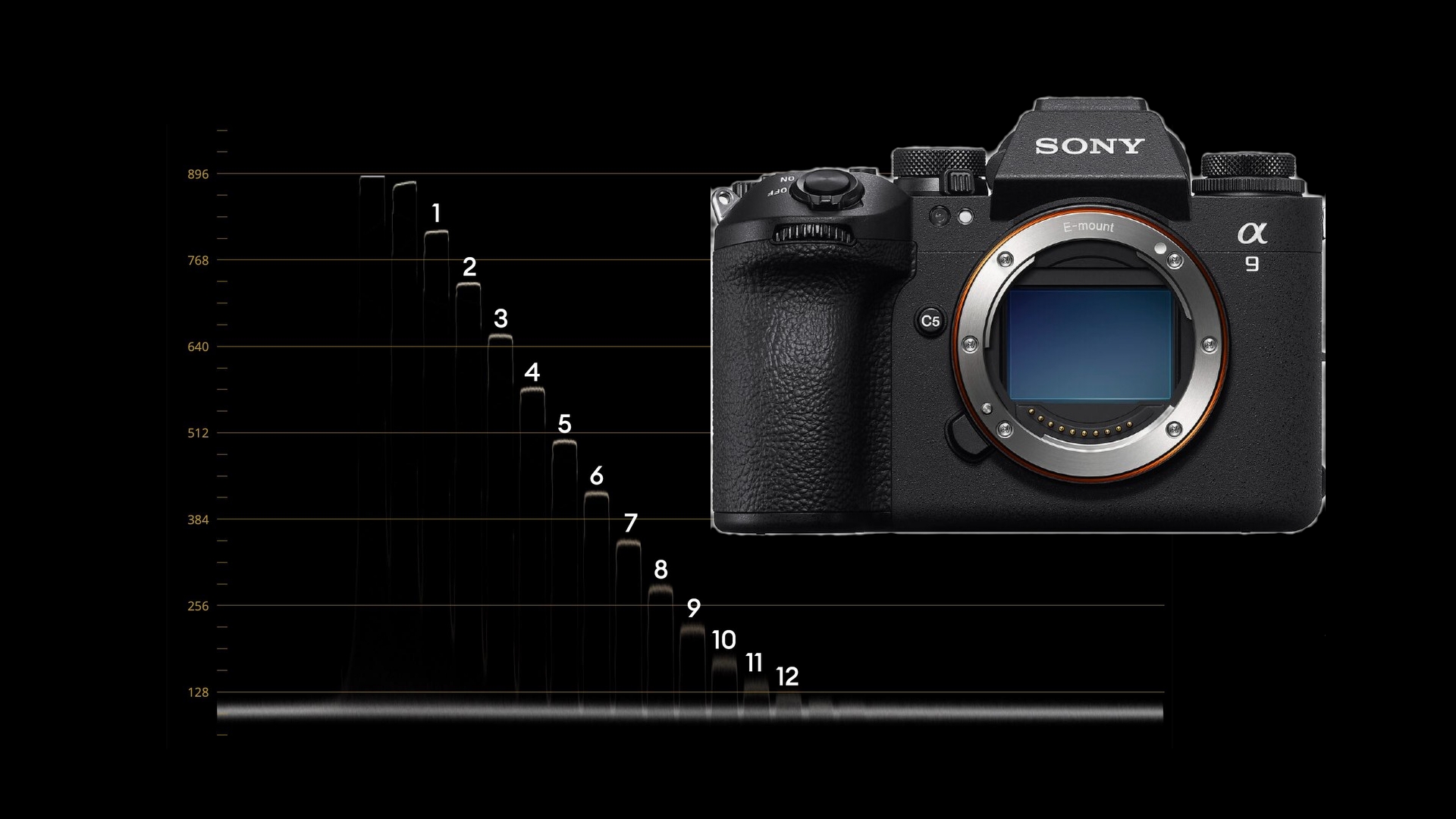The new Sony a9 III has arrived at CineD HQ and we were eager to run it through our lab tests – after all, it is the first Sony Alpha camera with a global shutter sensor. Until now, global shutter sensors were notorious for having low dynamic range. Well, times are changing…
Global shutter sensors have been around for some time, but until now they have been hampered by the fact that the dynamic range was significantly lower than that of their CMOS counterparts. RED was the first company to break this paradigm with its RED KOMODO 6K Global Shutter camera (see our lab test here), which performed very well in our dynamic range testing.
Now, Sony has introduced a full frame 6K global shutter sensor in its recent a9 III. Please visit our article here which covers the specifications and what’s new in terms of body and ergonomics. In short, it offers 4K video upsampled to 6K in full frame or Super 35 mode for a frame rate of 24 – 120 frames per second without any cropping.
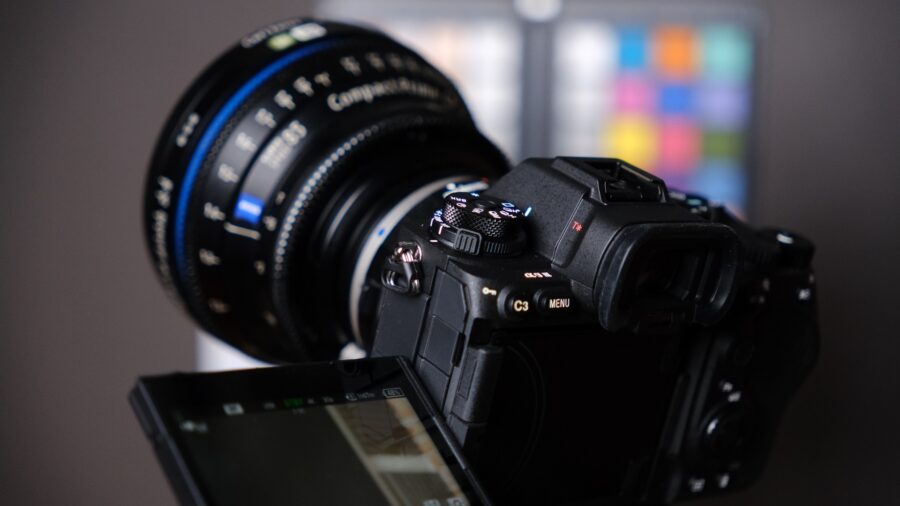
So, without any further delay let’s get straight to the results. Again, my dear colleague Florian Milz helped shoot this test and also provided the IMATEST analysis – thanks, Florian!
There is no rolling shutter section for this global shutter camera for obvious reasons, so the next step is a dynamic range measurement using our Xyla21 chart (see our article on how we test dynamic range here).
Dynamic range of the Sony a9 III at ISO2000
The first thing to notice when turning on the Sony a9 III is that the base or “native” ISO of S-Log3 is now 2000 instead of 800 like many other Sony cameras. OK, so here’s the waveform result shooting our Xyla21 chart in S-Gamut3.Cine/S-Log3 using full frame 4K XAVC SI at ISO2000:
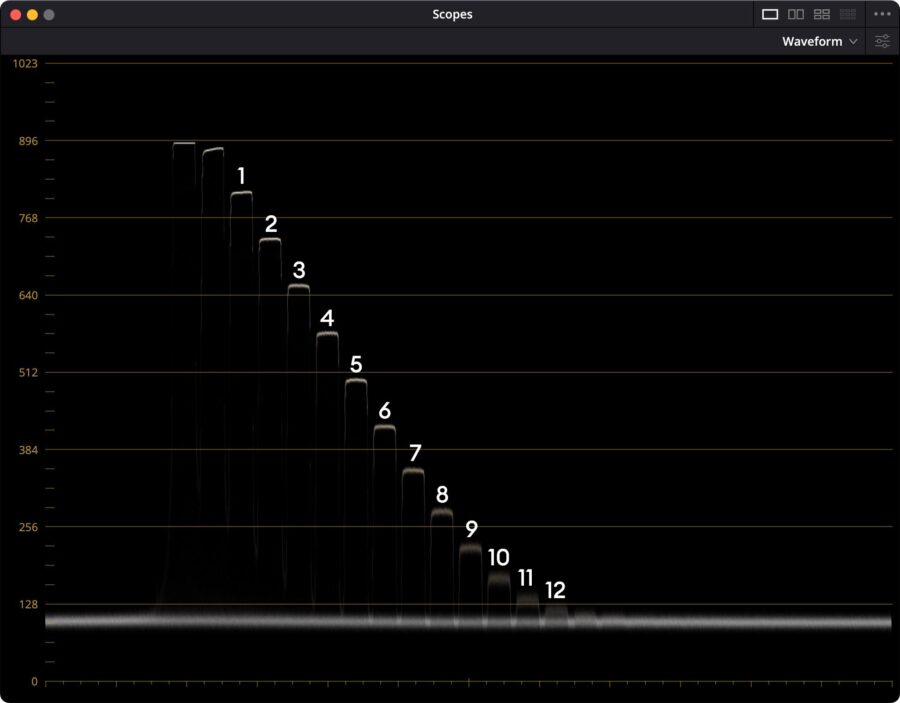
A solid 12 stops above the noise floor can be seen; Even the 13th and 14th stops are visible. IMATEST calculates 11.4 stops at a signal-to-noise ratio of 2 (SNR) and 12.7 stops at SNR = 1. At first glance, it looks more than 1 full stop lower than the Sony A7 IV camera we tested here.
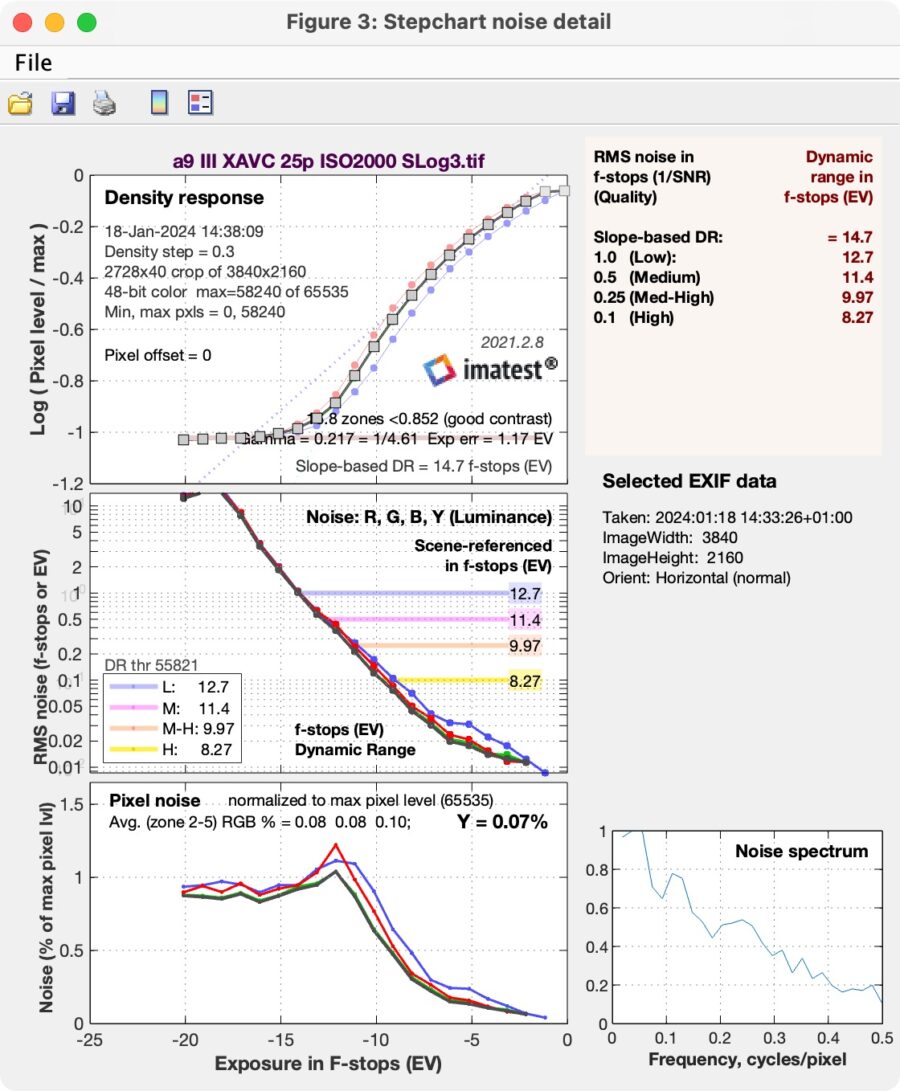
But, something interesting appears in the middle graph above the blue “12.7” line: there are another 3 stops displayed inside the noise floor that can potentially be “excavated” using noise reduction in post. All other Sony Alpha cameras we’ve tested so far have a lot of internal noise reduction (which can’t be turned off) already built into the image, leading to better IMATEST results, but requiring additional stops to reveal. Also failed to show any potential. Noise floor.
The Sony a9 III seems to be different here. This noise looks high, but the noise looks finely dispersed, so if the image pipeline including the codec is capable of encoding this fine image grain we will be able to pull stops from the shadows using post-noise reduction.
Also, the dynamic range remains the same for 60 frames per second and 120 fps. quite remarkable.
In 4K Super 35 mode, there is no oversampling from 6K, so the image is slightly noisy, which is visible in the waveform and IMATEST results below:
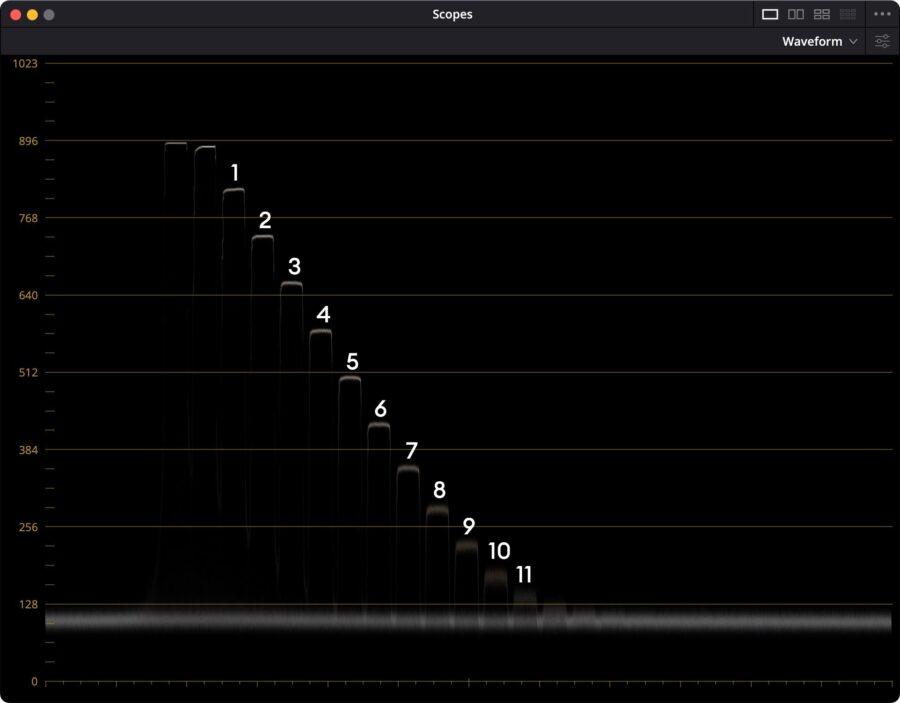
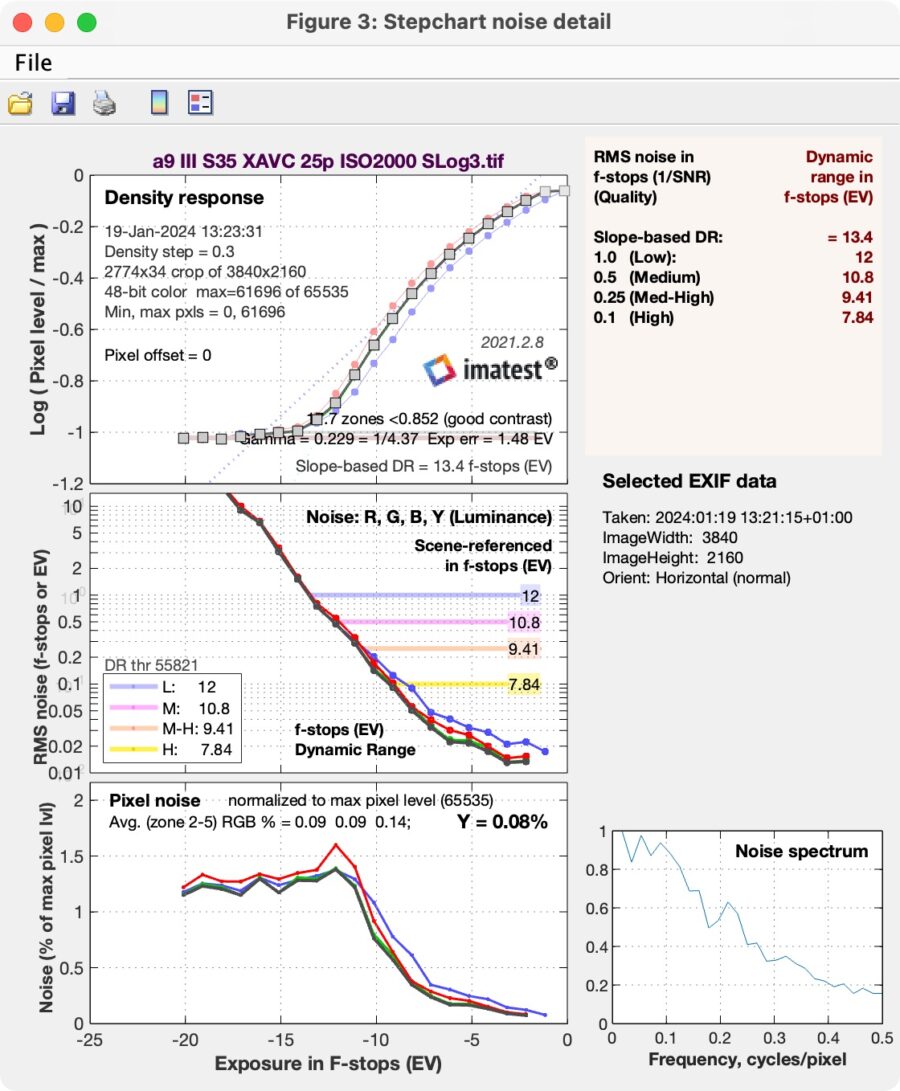
Dynamic range reduces to 10.8 stops at SNR = 2 and to 12 stops at SNR = 1.
Exposure latitude of Sony a9 III
As stated in earlier articles, latency is the ability of a camera to retain details and colors when over or underexposed and pushed back to the base exposure. This test is very revealing, as it pushes the entire image pipeline of any camera to its absolute limits – not just in the highlights, but mostly in the shadows.
Our studio base exposure is (arbitrarily) chosen to be an (ungraded) luma value of about 60% on the forehead of our subject on the waveform monitor – in this case, my colleague Nino:
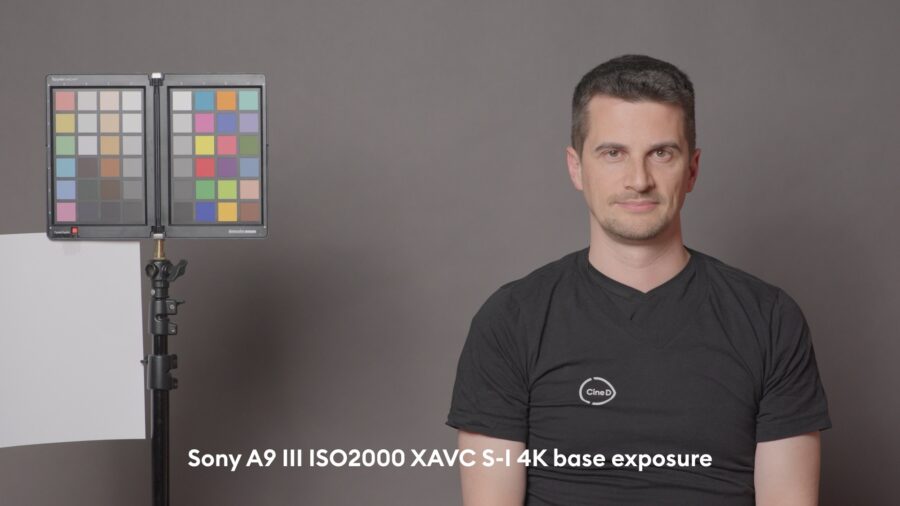
Again, we shot S-Gamut3.Cine/S-Log3 using full frame 4K XAVC SI at ISO2000. Log images were developed in DaVinci Resolve 18.6.4 using the input color space transform (CST) in DaVinci Wide Gamut/Intermediate, then adjusted to base exposure and finally converted to Rec709 by another color space transform node. brought into.
At 4 stops above base exposure we’re on the verge of starting to clip the red channel on Nino’s forehead, but the image brought back to base looks perfectly fine:
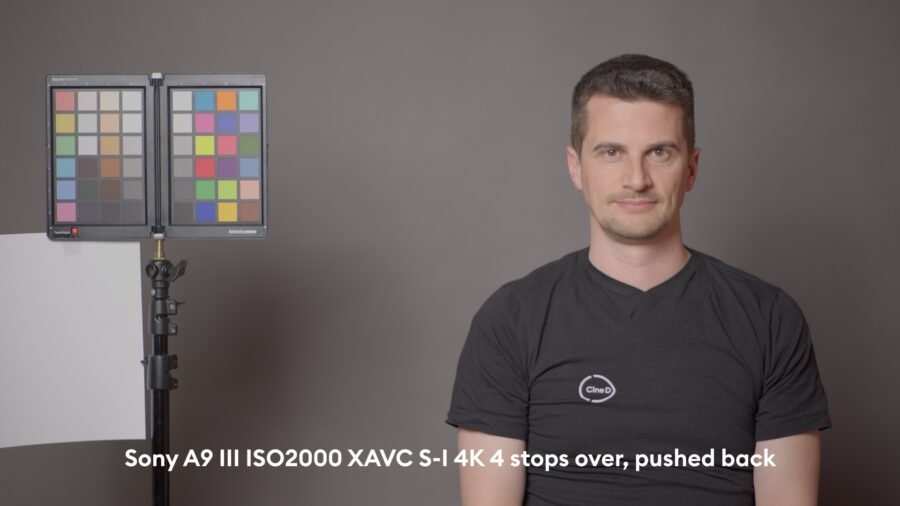
Now it gets interesting as we start to underexpose the image below our base exposure in 1-stop increments and push it back to base in post. At 3 stops down, a fine grain begins to appear in the image, which actually looks quite nice to my eyes.
Pushing back on the base noise, down 4 stops, becomes very noticeable in the image:
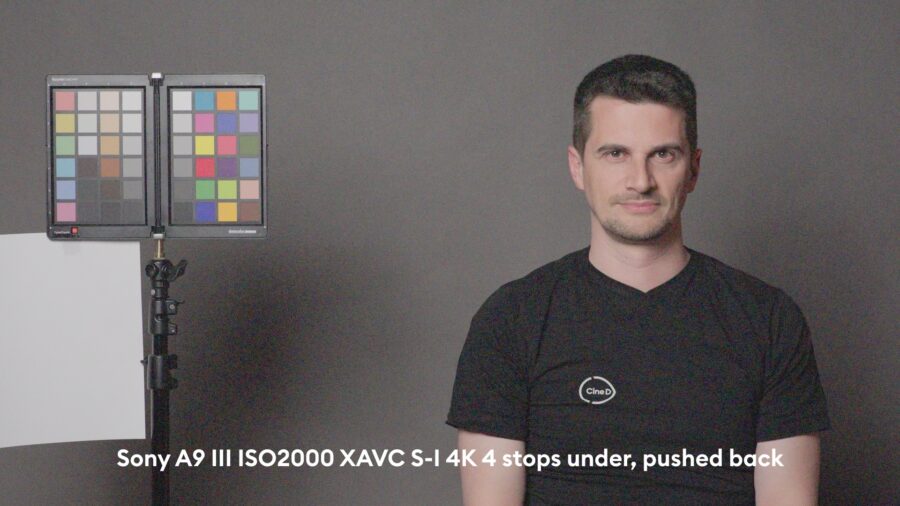
Noise reduction can still provide a nice and very useful result:
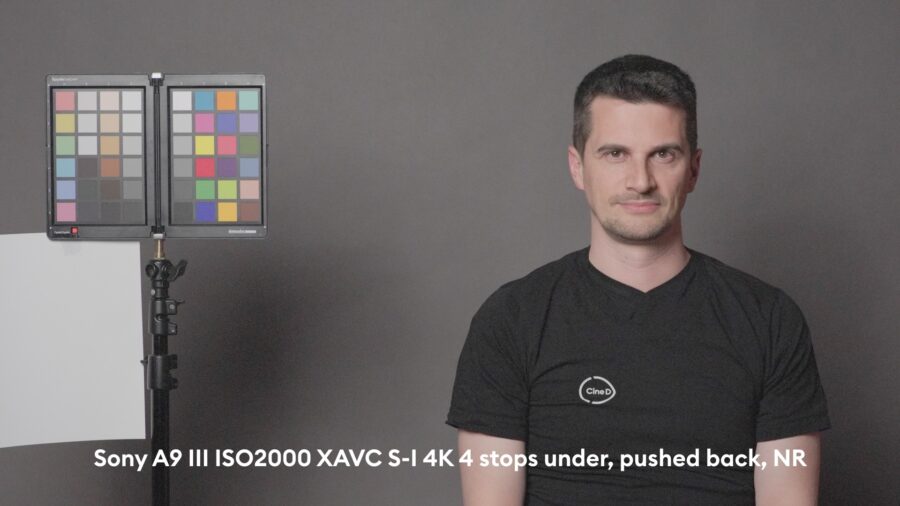
The image looks really good, there are no horizontal lines and no banding artifacts visible. We’re already at 8 stops of exposure latitude, which is actually 1 stop better than the Sony a7S III or Sony a7 IV – wow, that’s really cool! So far, only the Sony A1 has managed to provide 8 stops of exposure latitude.
Now, let’s see if we can extend this 1 stop further – to 9 stops of latitude:
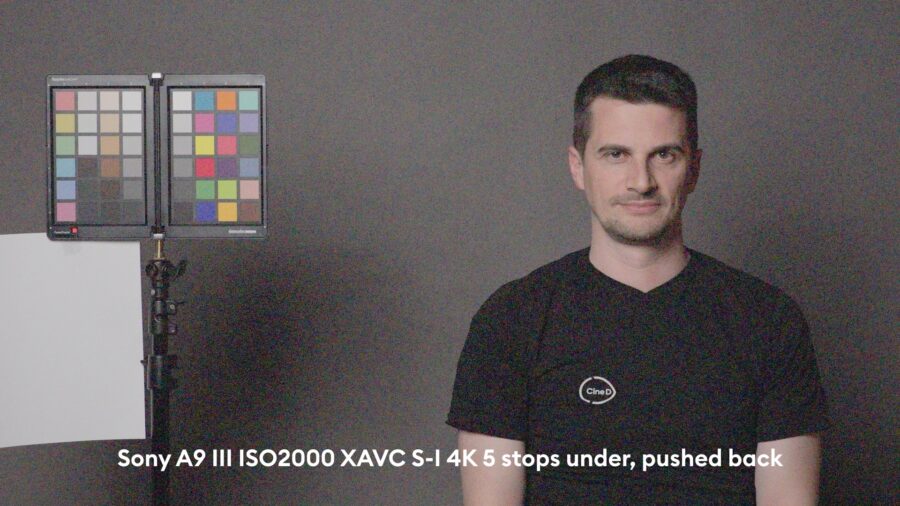
Luma and chroma noise is everywhere, but it’s still finely dispersed – unlike other Sony Alpha cameras, which usually start out showing large spots of chroma noise that can’t be easily removed with noise reduction. Is.
Noise reduction cleans up the image quite well:
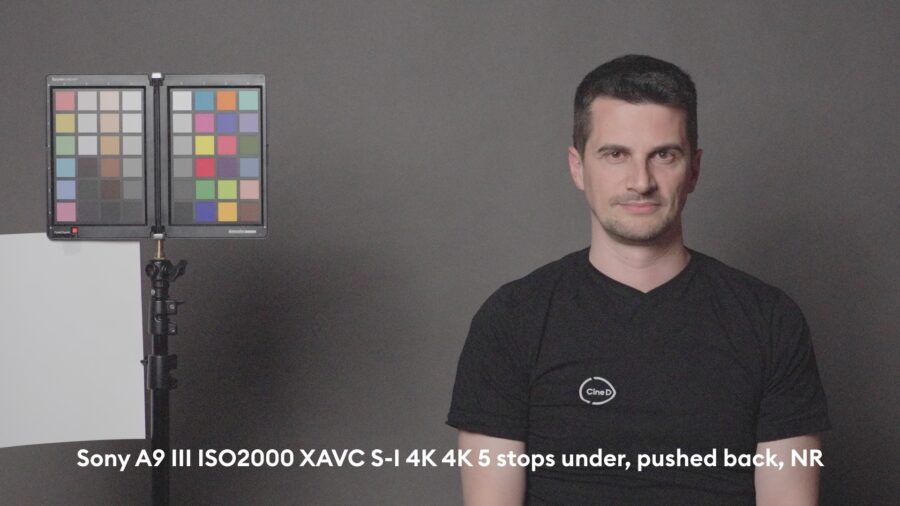
Wow – it’s still usable. We are at 9 stops of exposure latitude. The only cameras that managed to do this so far were the RED V-Raptor 8K VV (9 stops latitude), the ARRI Alexa Mini LF (10 stops latitude), and the Alexa 35 (12 stops). My criterion is always the shadow side of the face – take a look at how this area still looks clean.
I think we’ve reached the limit now, as there are faint but visible large spots of pink chroma noise. But they are still not too distracting to the eye.
Now let’s try to prevent underexposure one more stop by going up 10 stops exposure latitude:
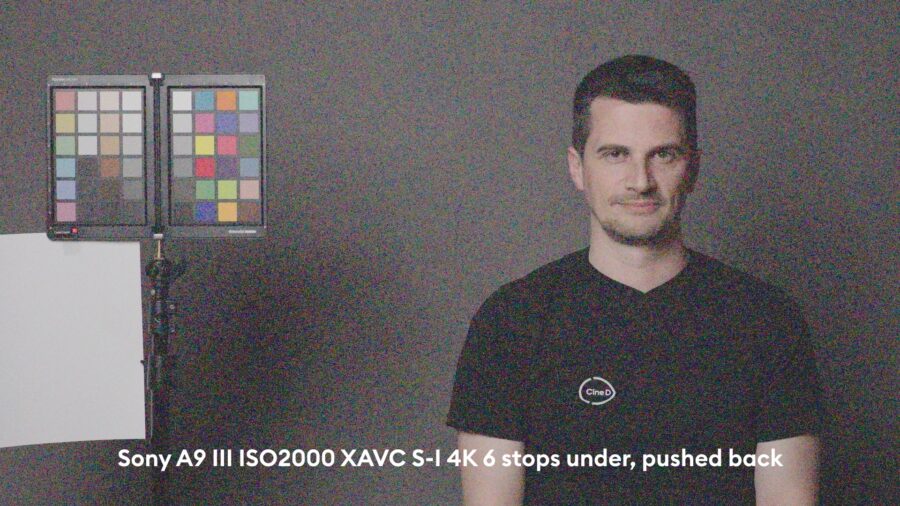
Now there is terrible noise everywhere. Let’s see what noise reduction can do:
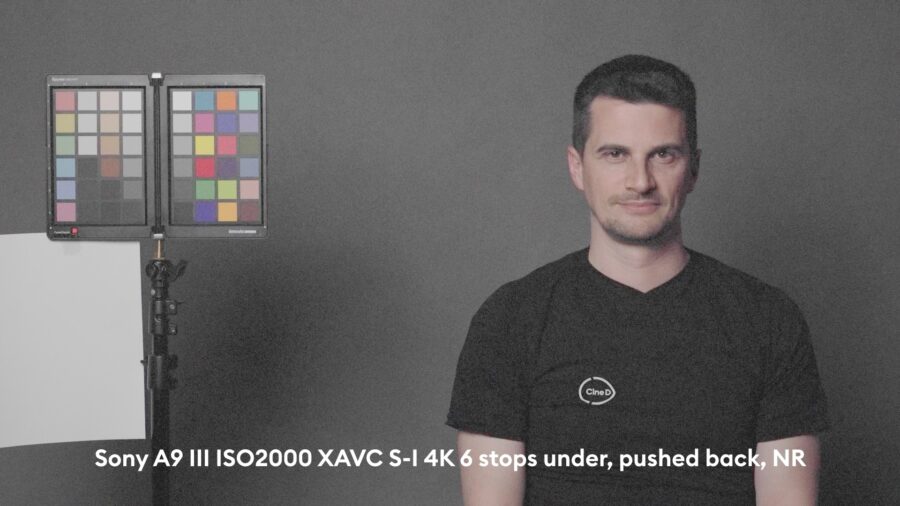
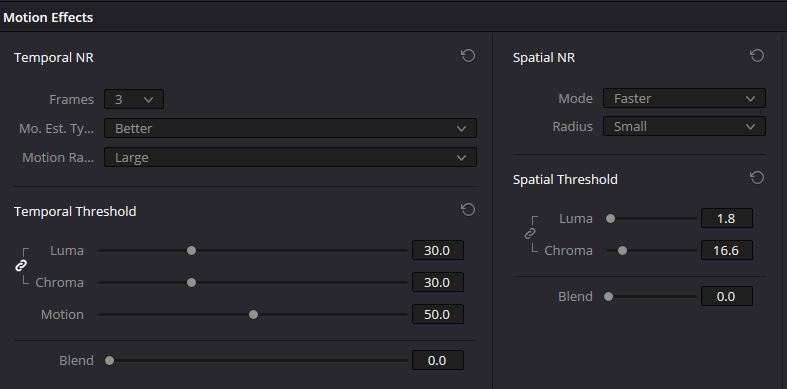
Now, it’s game over. The shadow side of Nino’s face can no longer be recovered, and the heavy noise reduction required to clean it up already leads to ghosting that would not be acceptable in a moving image. Even without the banding or horizontal/vertical line artifacts it still looks amazingly good!
In short, this leads me to a great result of 9 stops of exposure latitude, with some wiggle room towards 10. This is the best result we have found so far for a consumer full-frame camera (as mentioned above, the ARRI Alexa Mini LF exhibits 10 stops of exposure latitude, and the Alexa 35 12 stops).
Summary
The Sony Alpha 9 III demonstrated great results in our lab testing. Rolling shutter is non-existent (effectively 0ms) due to the nature of the global shutter design – the best we have and will ever see for a full-frame sensor. It can’t get better than here.
Using our Xyla21 charts and IMATEST analysis the dynamic range is average compared to other full-frame consumer cameras. But as is often the case, IMATEST results are only one piece of the puzzle looking at the camera’s dynamic range. This basically gives a sense of how noisy images are at different Xyla stops (patches). And here it can be clearly seen that the global shutter sensor is definitely noisier than its CMOS full-frame counterparts seen in other consumer full-frame cameras.
But Sony applied some magic to the image pipeline, including codecs, because the sensor’s fine noise is preserved in the final image and shadows can be largely pushed in post without creating ugly large spots of noise. This results in an impressive 9 stops of exposure latitude with some room towards 10, making this the best Sony Alpha camera in video mode so far in terms of dynamic range! In this respect, it is also the best consumer full-frame camera.
What a surprise – all this from one global shutter sensor! Well, as mentioned at the beginning of the article, times are changing…
Have you shot with the Sony a9 III yet? What are your experiences? Please use the comments section below to let us know what you think.

